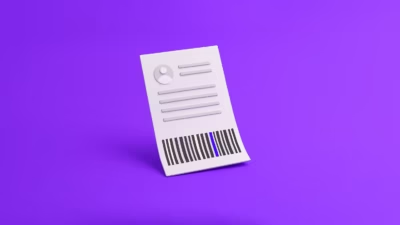Ever feel like every “entry-level” data science job wants three years of experience and a PhD in quantum sorcery?
Yeah. Me too.
You open a job post, hoping for a break. Instead, you’re smacked with a list of requirements longer than a CVS receipt. “Must know Python, R, SQL, Spark, Tableau, AWS, and be able to solve world hunger with a neural net.”
You’re not alone. Thousands of aspiring data scientists—career switchers, bootcamp grads, self-taught learners—hit the same wall every day. No experience = no job. No job = no experience. Classic catch-22.
But here’s the truth: you can land your first data science job—even if you’re starting from scratch. The trick? You’ve gotta stop playing the traditional game and start thinking like a storyteller, a builder, and a little bit like a hacker (the good kind).
Grab a coffee, because we’re diving deep into how real people—without fancy degrees or insider connections—crack into data science. And how you can too.
Let’s Get Real About “Entry-Level” Data Science Jobs
First, we need to decode a painful truth: a lot of “entry-level” data science jobs are mislabeled. They want candidates who are already mid-career. Why? Because data science is hot, hiring managers are overloaded, and it’s easier to pick someone who looks ready-made.
But that doesn’t mean there aren’t real entry-level roles out there. You just have to find them—and know how to look ready before you are.
Here’s what companies are really saying with those bloated job descriptions:
- “We want someone who’s done the job before, but we’ll settle for someone who shows they can do the job.”
- “We’ll take potential, if it’s obvious. But we won’t dig deep to find it.”
- “If you don’t have experience, you better have proof.”
So… let’s give them that proof.
Build Your Own Experience (Even If No One’s Paying You Yet)
Here’s your new mantra: projects over credentials.
No degree? No certs? No internships? No problem. If you can build something useful with data, you’re already ahead of 80% of job applicants.
Start With Real-World, Messy Problems
Skip the Titanic dataset. Please. Instead, try this:
- Pull housing price data from a public API and predict trends.
- Analyze a local city council’s crime reports and visualize hotspots.
- Scrape Goodreads reviews to find what readers love (or hate) about a genre.
Messy = valuable. Employers want to know you can deal with data that doesn’t come gift-wrapped.
Create a Portfolio That Feels Like a Story
Don’t just toss Jupyter notebooks on GitHub and call it a day. Walk people through your thought process. Answer the big question: why does this matter?
Your project write-up should include:
- What problem you solved
- How you cleaned and explored the data
- What insights or predictions you found
- What tools you used (Python, pandas, scikit-learn, etc.)
- What you’d do next if you had more time
Bonus: Host your project on a blog or portfolio site. Give it a cover image. A title. A little branding. That’s how you turn work into a product.
Pick the Tools That Matter—And Skip the Hype
You don’t need to master every tool and library under the sun. Focus on the ones that hiring managers actually care about:
Your Entry-Level Stack:
- Python – Learn the basics, then get comfy with
pandas,numpy,matplotlib, andscikit-learn. - SQL – Absolute must. No, really. If you can’t write a
JOIN, start there. - Git/GitHub – Not optional. Every project should live here.
- Jupyter Notebooks – Learn to explain your code as you go.
- A cloud platform (optional, but helpful) – AWS or GCP. Even if you just deploy one small project.
Skip deep learning and TensorFlow for now. Unless you’re going into research or applying at OpenAI (hi), stick with simple, clear, explainable models.
Pro tip: I once got into a final interview purely because my notebook used clean markdown cells to explain my logic. Not the model. Not the accuracy. The storytelling.
Apply Like a Human, Not a Job-Hunting Bot
You don’t need to apply to 300 jobs. You need to apply to 30 the right way.
Customize Your Resume Every Time
Yes, it’s a pain. But if the job says “Python, SQL, Tableau,” then those exact keywords need to be in your resume. Not “data tools” or “programming experience.” Speak their language.
Use real project experience like this:
Freelance Data Scientist
Self-initiated project | Remote | Jan – Mar 2025
Built a regression model in Python to forecast housing prices in Chicago using Zillow and census data. Deployed interactive dashboard using Streamlit to visualize trends by neighborhood.
Looks a lot more credible than “Learning Python, watching Coursera videos.”
Write a Cold Email That Doesn’t Suck
Here’s a template I used that actually got replies:
“Hi [Name],
I’ve been following your work at [Company]—especially the recent piece on [X initiative]. I recently completed a project that tackled a similar challenge using public data, and I’d love to share it with you or get your feedback. I’m currently looking for entry-level data science roles, and your team really stood out. Would you be open to a quick chat or taking a look at my project?”
Keep it short. No resumes. No big ask. Just curiosity + value.
Don’t Sleep on These Hidden Entry-Level Roles
You might be so focused on “data scientist” as a title that you’re ignoring the back doors.
Here are roles that often involve the same skills but get less traffic:
- Data Analyst
- Research Assistant (in industry or academia)
- Business Intelligence Analyst
- Product Analyst
- Marketing Analyst
- Data Engineer (junior)
- Quantitative Research Assistant
- ML Operations Intern / Data Intern
These roles can easily be stepping stones. And many of them lead to data science tracks internally once you’re in.
Make Recruiters Notice You (Before You Apply)
Let me guess—you’ve got a LinkedIn profile, but it’s dry as toast.
Let’s fix that.
Your Headline = Your Elevator Pitch
Instead of:
“Aspiring Data Scientist | Python Enthusiast | Open to Work”
Try:
“I turn messy data into useful insights using Python, SQL, and a little curiosity. Looking for my first DS role.”
Pin Your Best Work
If someone lands on your profile, they should immediately see:
- A pinned project (GitHub, blog, dashboard)
- A post where you broke down how you solved a real data problem
- A comment or two on others’ work (seriously, engagement helps)
Weekly Content Hack
Post once a week. Even simple stuff like:
- “3 things I learned while cleaning New York taxi data”
- “Tried my first clustering model—spoiler: it didn’t work, but I learned this”
- “How I found story gaps in a job posting using NLP”
Content builds trust. And trust gets you hired.
You Don’t Need to Be “Job-Ready.” You Need to Be Proof-Ready.
Forget perfect. Aim for proof. Show that you can:
- Ask good questions
- Work with data from start to finish
- Communicate your findings clearly
- Keep learning (and showing what you learned)
Because here’s the inside scoop: most hiring managers would rather train a curious, self-starting junior analyst than hire someone who’s memorized sklearn but can’t explain what a p-value means.
Your 30-Day Launch Plan (No Bootcamp Required)
Wanna turn intention into traction? Try this:
Week 1: Skill Sprint
- Nail SQL basics
- Build a mini Python project
- Push it to GitHub
Week 2: Data in the Wild
- Pick a messy dataset
- Analyze, clean, visualize
- Write it up and share it
Week 3: Portfolio Polish
- Build a simple personal site (Notion, GitHub Pages, or Carrd)
- Add 2–3 projects
- Start posting on LinkedIn
Week 4: Apply Smart
- Customize your resume
- Reach out to 10 real humans
- Apply to 10 jobs you actually qualify for
- Ask for feedback
Rinse. Repeat. Improve.
Final Word: Your First Job Isn’t the Goal. Momentum Is.
Let’s be honest: you’re probably not gonna land your dream data science job tomorrow. But if you stay visible, stay curious, and keep building stuff that helps people understand data better—you will not go unnoticed forever.
Your first job won’t define you. But getting started? That’s everything.
So go. Build. Share. Get rejected. Try again. Adjust.
You’ve already started by reading this far.
Let’s make the next click count.





